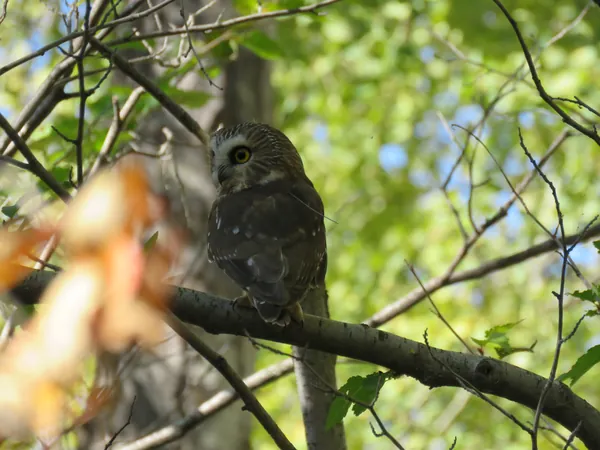
Surprising Discoveries: Northern Saw-whet Owls' Migration Journey Reveals New Insights in Western Montana
2025-04-01
Author: Daniel
Researchers in Western Montana have made astonishing discoveries about the migration patterns of northern saw-whet owls (Aegolius acadicus), a groundbreaking study that tracked 89 of these small raptors along a critical migration corridor. Published in the Journal of Raptor Research, their paper titled "Migration and Roosting Behavior of Northern Saw-whet Owls During Fall Migration in Western Montana" shines a light on the complex and often elusive behaviors of these little-known creatures.
One of the most unexpected findings was the owls' stopover behavior, where they pause during their migration to rest and refuel. This revelation indicates that these birds exhibit significant individual variations in their travel patterns, something not well understood until now. Lead researcher Kate Stone highlighted that despite being one of North America's smallest owls, their migration journey remains a mystery. "They are incredibly common and numerous, so, it's mind-boggling that we know so little," she noted.
These owls are roughly the size of a human hand and are notoriously difficult to spot in their natural habitat, often perching high where they can easily blend in with pine trees—sometimes even mistaken for a pine cone! This makes traditional tracking methods challenging as they do not leave obvious signs like droppings or pellets at their roost sites.
In previous studies, much of the knowledge about saw-whet owl migration has been gleaned from banding data, which provides limited insights into their travel habits and habitat needs. By employing modern telemetry technology, the research team was able to gain a more intricate understanding of their migration journey, including the route and environmental factors that influenced their travel.
The study, conducted during the fall seasons of 2014 and 2015, involved equipping the owls with temporary VHF radio transmitters, enabling researchers to track their movements from the air and verify locations from the ground. Most of the owls exhibited migratory behavior, with key findings revealing that while many flew south, more than half of the tracked owls made significant stopovers. In fact, the nightly travel distance for these owls averaged between three and eight kilometers (three to five miles), though one brave owl managed an impressive flight of nearly 66 kilometers (over 40 miles)!
"This stopover behavior indicates that saw-whets are significantly reliant on the landscape to support their migratory journeys," Stone explained. This insight has broader implications, suggesting that understanding the needs of common species like the saw-whet owl could enhance conservation efforts for less understood owl species, such as the western screech owl and the flammulated owl.
As urban development continues to reshape natural landscapes, the knowledge gained from this study is crucial for the conservation of migrating birds. Stone emphasizes the importance of understanding owl movement patterns and habitat preferences, which could help inform better management decisions for their populations.
With hopes of utilizing more advanced tracking technology in future studies, including the automated Motus network, the research team is poised to unravel even more mysteries surrounding the intriguing lives of owls. Their work not only adds to the scientific understanding of these fascinating creatures but also highlights the significance of robust conservation efforts as we confront the challenges posed by human-altered environments.
Stay tuned—there's so much more to discover about the wonders of avian migration in our own backyards!

 Brasil (PT)
Brasil (PT)
 Canada (EN)
Canada (EN)
 Chile (ES)
Chile (ES)
 Česko (CS)
Česko (CS)
 대한민국 (KO)
대한민국 (KO)
 España (ES)
España (ES)
 France (FR)
France (FR)
 Hong Kong (EN)
Hong Kong (EN)
 Italia (IT)
Italia (IT)
 日本 (JA)
日本 (JA)
 Magyarország (HU)
Magyarország (HU)
 Norge (NO)
Norge (NO)
 Polska (PL)
Polska (PL)
 Schweiz (DE)
Schweiz (DE)
 Singapore (EN)
Singapore (EN)
 Sverige (SV)
Sverige (SV)
 Suomi (FI)
Suomi (FI)
 Türkiye (TR)
Türkiye (TR)
 الإمارات العربية المتحدة (AR)
الإمارات العربية المتحدة (AR)